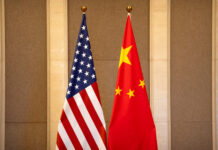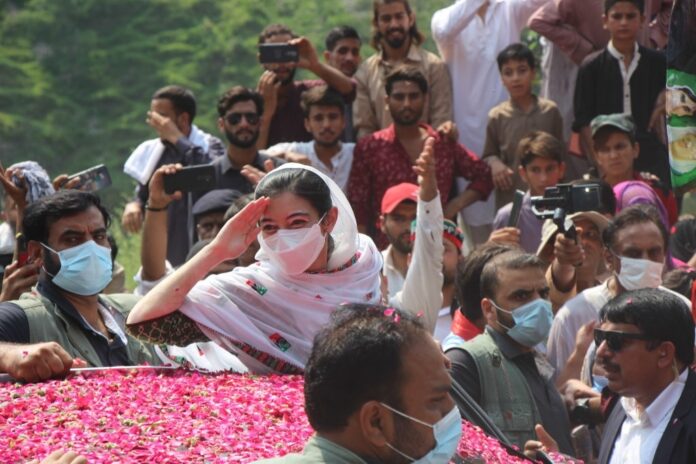MUZAFFARABAD: Even as the poll campaign to elect the 53-member regional assembly in Azad Jammu and Kashmir has entered into the final phase, the 12 reserved seats for refugees have become a subject of debate.
Out of 45 general seats for which elections will take place on Sunday (July 25), 12 are reserved for 464,000 refugees — six each for those migrated from the Jammu and Kashmir divisions of Indian-occupied Kashmir in 1947 and 1965.
Analysts point out the disparity in the distribution of these seats, saying that while 30,000 people registered as refugees from Kashmir region elect six representatives, 434,000 people registered as refugees from the Jammu division also elect an equal number of representatives.
Further, these people do not live in Azad Kashmir but are scattered wide across Pakistan.
The rationale behind the allocation of these seats was to provide representation to the refugees in the state assembly, which now many see as the “trump card” used by ruling parties to turn results in their favour.
Bashir Sadozai, a Karachi-based Kashmiri political analyst and author, however, supports the allocation of seats to refugees. But he also stressed the need to end their “misuse”.
“These seats have been reserved to provide representation to all segments of Kashmiri society, which is good,” he said, citing the example of the assembly of Indian-occupied Kashmir, which has also 24 reserved seats for AJK as well as for the northern Gilgit-Baltistan region.
He acknowledged that successive Pakistan governments both at the centre and provinces have misused them to gain influence in the Azad Jammu and Kashmir Legislative Assembly.
RULING PARTIES WIN THESE SEATS:
Sadozai said any party winning a majority of the refugee seats takes the comfortable lead to form the government in AJK.
In the 2016 elections, the political parties ruling the centre and provinces won these 12 seats. Ten seats were won by the Pakistan Muslim League-Nawaz, which was in power in the centre as well as in Punjab which is home to the highest number of Kashmir refugees.
Pakistan Peoples Party and the Pakistan Tehreek-e-Insaf which respectively ruled Sindh and Khyber Pakhtunkhwa in 2016 won one seat each.
Now in role reversals, the PTI is ruling the centre and the provinces of Punjab and KP, whereas the PPP continues to be in power in Sindh.
Danish Irshad, a Muzaffarabad-based political analyst, says that the refugee seats have been often used for “political engineering” to form the government in Azad Jammu and Kashmir.
“Kashmiri political and social circles have had serious reservations over this whole process. This [process] is widely seen as a hurdle in holding of free and fair elections in AJK,” said while speaking to Anadolu Agency.
He said that the AJK Election Commission is in no position to exercise authority and regulate the conduct of elections in these 12 seats, which makes the exercise “suspicious” and “faulty”.
Moreover, he added, these constituencies are spread in three provinces, making it impossible for candidates to cover such a huge area to lure voters with their agenda.
The Jammu-I constituency is the largest in terms of area, whose voters are spread over Punjab, Sindh, and Balochistan, involving 48 districts.
The voters of another constituency reserved for refugees from Kashmir are scattered around in 27 districts of Sindh and Balochistan.
LEAST INTEREST IN LOCAL ISSUES:
According to Irshad, the Kashmiri voters settled in Pakistan have the least interest in the governance and administrative functioning and the problems of Azad Jammu and Kashmir.
He said the provincial governments often use their “resources” to win these seats to have an edge in the AJK assembly.
Sadozai said that a large number of refugees, especially from the Jammu region, have mixed up with the local population in Pakistan and no longer hold a separate Identity.
“Hundreds of thousands of migrants from Jammu and Kashmir are residing in Karachi alone, but they have merged with the local population, and no longer identify themselves as refugees,” he said.
NEW CATEGORY OF REFUGEES:
There is, however, another category of refugees, who have migrated from occupied Kashmir in 1990 and afterwards and are settled along with the border areas or in Muzaffarabad.
These refugees comprising over 8,000 families have been lodged in different refugee camps, located along the Line of Control (LoC), a de-facto border that divides Jammu and Kashmir between the two neighbours.
Some of them have registered themselves as voters in the Azad Kashmir.
Waiting for passengers at the main bus stop of Garhi Dupatta town, located some 22 kilometres (13 miles) from Muzaffarabad, Mohammad Ilyas, a young rickshaw driver, said he would vote for a candidate belonging to his Pahari community.
This community, which makes up 75 percent of this post 1990-refugee population, has been moved to a refugee camp near Garhi Dupatta set up by Pakistan Army.
These refugee camps are officially governed by community or baradari (community) heads, who decide to support or oppose any particular candidate. Ilyas says that the refugees do not afford to go against the will of local administration, which provides them with a monthly stipend and other facilities.























